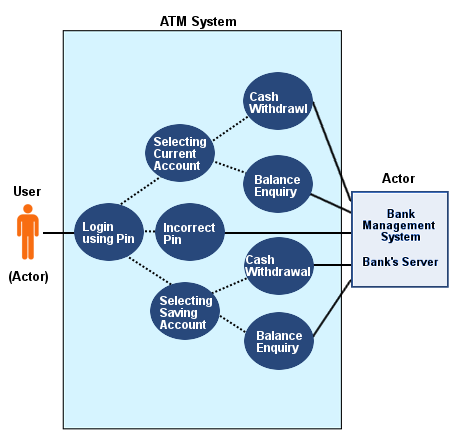

Use case diagram may be seen as a simplest tool or method to capture the behaviour of the software product or system, when it is in running or operational mode. It is a type of UML diagram, which enables to capture, formulate and model the functional requirements of a system.
Basically, it reflects the dynamic behavorial attributes of a system during its interaction with the actors through internal or external interfaces. Here, actors are the entities which interacts with the system to carry out and achieve a particular task. Thus, under the category of actors, we may consider a user which uses the system to achieve a specific goal or any external system, which interact the system to execute a particular task.
A use case diagram particularly, consists following element or objects or notation:

Actor is any entity, which gets interacts with the system and uses it. It may include a user or a group of users or organization or any external system or any internal application.

In a use case diagram, a use case is depicted by an oval shape which is used to define the action or the sequence of action, functionality performed or used by a user, over a system.

System is shown as a rectangular box in a use case diagram. It is used to define the scope and boundary for the use cases.

A straight line used in a use case diagram to reflect the relationship or association between an actor and a use case. It is drawn between the actor and a use case when an actor gets involved in the interaction with a system, as described by a use case.
In the above given example, we have an ATM system, which consists of 6 different use cases. Here, we have two actors, one is the user and other one is the Bank server. The relationship or association between the actors and the use cases are being shown by a straight line, whereas a dash-dotted line depicts the extended/included relationship between them.

Below given are the some of the significant points that one must consider, while designing and creating a use case diagram.
Advertisement: